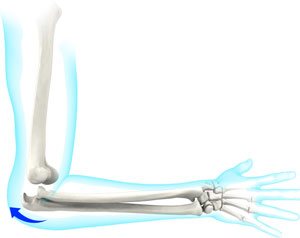Dr. Rice has joined Beacon Orthopedics and Sports Medicine
Congratulations Dr. Rice: 2025 Cincinnati Magazine Top Doctor
Elbow Instability

Recurrent and Chronic Elbow Instability
The elbow is formed by the junction of the humerus (upper arm bone), and radius and ulna (forearm bones). These three bones articulate to form the elbow joint, which is held and supported by muscles and strong ligaments called the lateral ligament (on the outer side) and ulnar collateral ligament (on the inner side). Injury to these ligaments cause elbow instability and dislocation of the joint. Recurrent or chronic elbow instability is characterized by repeated looseness of the joint and feeling that it may move out of place. Other symptoms include catching, clicking or locking of the elbow. It may also be associated with a fracture of the ulna bone.
Recurrent or chronic elbow instability may be caused by trauma, falling on an outstretched arm or repeated stress as seen in sports activities that involve overhead movement of the arm.
When you present to the clinic with elbow instability, your doctor will review your medical history, perform a detailed physical exam and order imaging studies (X-ray and MRI scan) to diagnose recurrent elbow instability.
Non-surgical treatment with bracing, NSAIDs, activity modification and physical therapy may be all that you need to manage your instability. However, extreme stress and tearing of the ligaments may require surgery, where your surgeon repairs the ligament and fixes the elbow fracture with pins or screws, or replaces and reconstructs the damaged ligament with a tissue graft.


